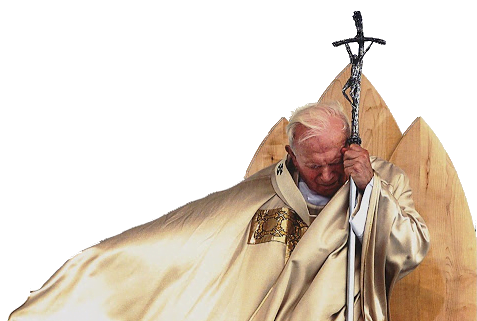
On October 7, the Roman Catholic Church celebrates the yearly feast of Our Lady of the Rosary. The feast is exactly one week after the similar Byzantine celebration of the Protection of the Mother of God, which most Eastern Orthodox Christians and Eastern Catholics celebrate on October 1. Known by the alternate title of “Our Lady of Victory,” the feast day takes place in honor of a 16th century naval victory which secured Europe against Turkish invasion. Pope St. Pius V attributed the victory to the intercession of the Blessed Virgin Mary, who was invoked on the day of the battle through a campaign to pray the Rosary throughout Europe.
In 1571 the Moslem Empire of Asia, the Turkish Ottoman Empire, had reached a point of great power and military might. Troops of the Ottoman Empire already had invaded and occupied most of the Byzantine empire by 1453, bringing a large portion of the increasingly divided Christian world under a version of Islamic rule. For the next hundred years, the Turks expanded their empire westward on land and asserted their naval power in the Mediterranean. In 1565 they attacked Malta, envisioning an eventual invasion of Rome. Though repelled at Malta, the Turks did capture Cyprus in the fall of 1570.
Pope Saint Pius V, recognizing the danger, organized an alliance of Catholic powers called the Holy League consisting of troops from Genoa, Spain, and the Papal States to defend Christian civilization against an Ottoman invasion. A brave and brilliant commander, Don Juan of Austria, was named to take command. In the early days of October 1571, he sailed to meet the enemy and encountered them in the Bay of Lepanto. Although the Christian troops were heavily outnumbered, their skillful maneuvers, together with the bravery of the Christian troops, brought about a decisive victory and the Moslem fleet was all but destroyed.
Some accounts say that Pope Pius V was granted a miraculous vision of the Holy League’s stunning victory. Without a doubt, the Pope understood the significance of the day’s events, when he was eventually informed that all but 13 of the nearly 300 Turkish ships had been captured or sunk.
Before and during the decisive battle, the Christian world, led by Pope Saint Pius V, invoked the Blessed Virgin in a special way for her assistance; and they were convinced that the victory at Lepanto was a result of Mary’s help. The Pope proclaimed a special feast in honor of Our Lady of Victory, to be celebrated on the first Sunday of October.
Two years later Pope Gregory XIII changed the name of this feast to that of the Holy Rosary, honoring the special prayer to which the victory was ascribed. The celebration of the feast is now observed on October 7, the date of the Battle of Lepanto. Out of this celebration arose the custom of dedicating the entire month of October to Mary and the Rosary, Our Lady of the Rosary, a custom highly sanctioned and approved by succeeding Popes.
Pope Leo XIII, in more modern times, added to the Litany of Loreto the invocation: “Queen of the most holy rosary, pray for us.”
The devotion of the rosary preceded the feast by centuries, and the institution of the feast was a tribute to the power of the devotion. The origin of the devotion is probably the vision granted to St. Dominic in which the Blessed Virgin bade him use it as a means of overcoming heresy. Tradition tells us that the great Dominican beheld this vision in 1206 when he was mourning the inroads made by the Albigensian heretics. Victory at the battle of Muret was attributed to the recitation of the rosary by St. Dominic.
The weapons of war have changed drastically since the battle of Lepanto well over 400 years ago; but without doubt the spiritual weapon of the rosary remains as potent for winning the final victory, if only enough people will properly make use of it. At Lourdes and at Fatima Mary appeared to the favored children holding in her hands a rosary. She made it clear to them, and through them to the world, that the frequent and devout recitation of the rosary was the means by which the world could be brought back to God and lasting peace could be achieved.
Pope Leo XIII was particularly devoted to Our Lady of the Rosary, producing 11 encyclicals during his long pontificate on the subject of this feast and its importance.
In the first of them, 1883’s Supremi Apostolatus Officio, he echoed the words of the oldest known Marian prayer (known in the Latin tradition as the Sub Tuum Praesidium), when he wrote, “It has always been the habit of Catholics in danger and in troublous times to fly for refuge to Mary.”
“This devotion, so great and so confident, to the august Queen of Heaven,” Pope Leo continued, “has never shone forth with such brilliancy as when the militant Church of God has seemed to be endangered by the violence of heresy … or by an intolerable moral corruption, or by the attacks of powerful enemies.” Foremost among such “attacks” was the battle of Lepanto, a perilous and decisive moment in European and world history.
“Turkish victory at Lepanto would have been a catastrophe of the first magnitude for Christendom,” wrote military historian John F. Guilmartin, Jr., “and Europe would have followed a historical trajectory strikingly different from that which was obtained.”
May God Bless You and Grant You His Peace!

